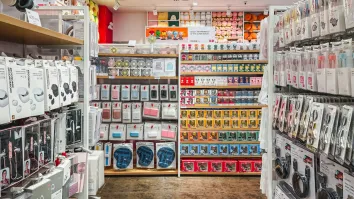Asia-Pacific's retail sector continues its post-pandemic recovery
The rise of e-commerce helped Asia-Pacific retail rebound.
Retail sales growth in Asia-Pacific experienced a significant decline during the COVID-19 pandemic, but the region is now witnessing a strong rebound that aligns with global trends.
According to Bain & Company’s APAC Retail Practice Leader Melanie Sanders, the region's extended lockdowns, significant supply shortages, and a fragile consumer base deeply concerned about economic conditions contributed to the harsh environment for retail businesses.
"A lot of that had to do with the fact that we had much longer shutdowns, significant supply shortages, and we are now facing a fairly fragile consumer who is very concerned about the state of the economy, and that means that they're very conscious of their spending at the moment," she added.
Despite the slow recovery, several key factors are driving the retail rebound in Asia-Pacific. Sanders pointed out the significant restructuring of market structures, particularly the rise of e-commerce players in the region. "We've seen a significant disruption in each of the geographic markets that make up Asia. The large digital players have taken really significant market share from the leaders in each of their markets," she noted. Companies like Shopee, Coupang, and Amazon have rapidly expanded their market presence, disrupting traditional retail giants.
Radhika Sridharan, Bain & Company’s Partner in Mumbai, emphasized three key strategies that retailers should focus on: improving operating margins, sharpening value propositions, and exploring new growth avenues.
Sridharan highlighted the importance of refining value propositions to meet the evolving needs of consumers. "Value for money, of course, remains critical for most customers in the region, but increasingly, we're also seeing that integration of social elements into the shopping journey is starting to become critical, and smart retailers are capitalizing on both of these," she explained.
Sridharan pointed to new growth opportunities, such as retail media, payments, and new category adjacencies. "Our analysis suggests that these could account for as much as a third of incremental revenue and about 50% of profits by 2030, so these will be increasingly material opportunities for retailers," she stated.
She outlined four distinct archetypes of markets based on the current level of retail disruption and the headroom for organic growth.
"For example, if you look at India, Vietnam, Indonesia, even China, they have an environment where there's significant headroom for continued organic growth, especially as categories start to become more organized and incomes grow," she said. However, these markets have also experienced significant disruption, with new insurgents rapidly emerging.
In contrast, Sanders discussed markets with less disruption and lower growth potential, such as Japan. "Those markets are really focused on a couple of things, one of which is driving out productivity out of their core business, cost efficiency, and so on. Second of all, they are working very hard to look at their assets and where you've got markets like Japan, where population growth is low and the retail footprint has been very built out. They probably are overstored," she explained.



















 Advertise
Advertise








